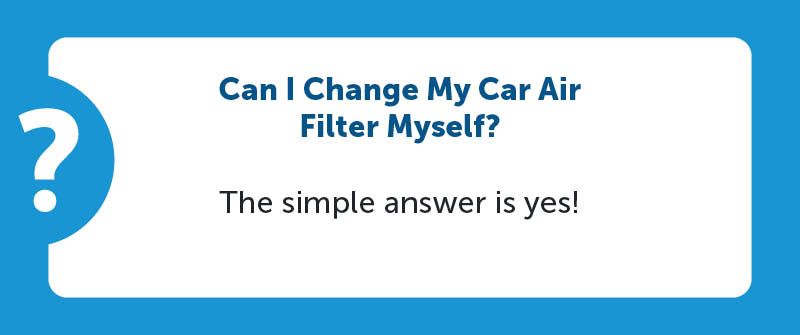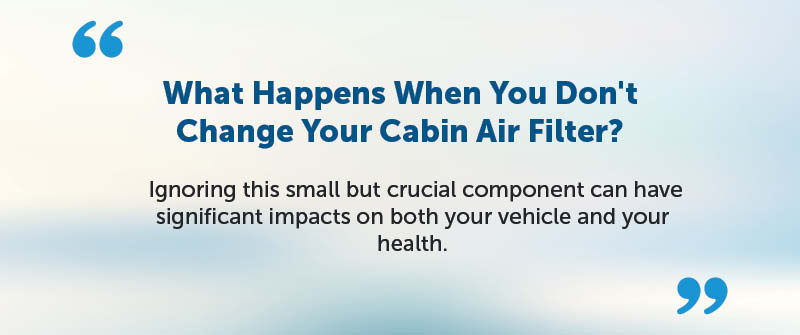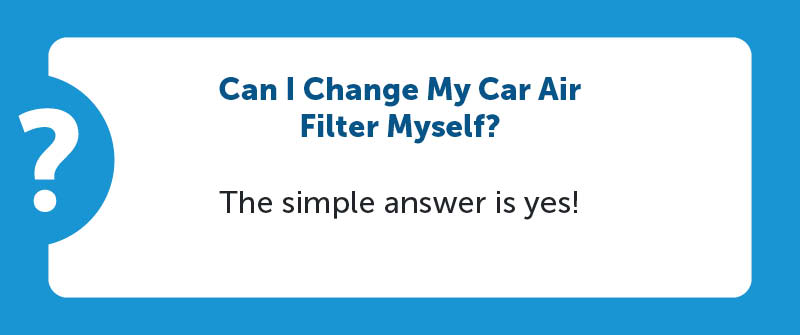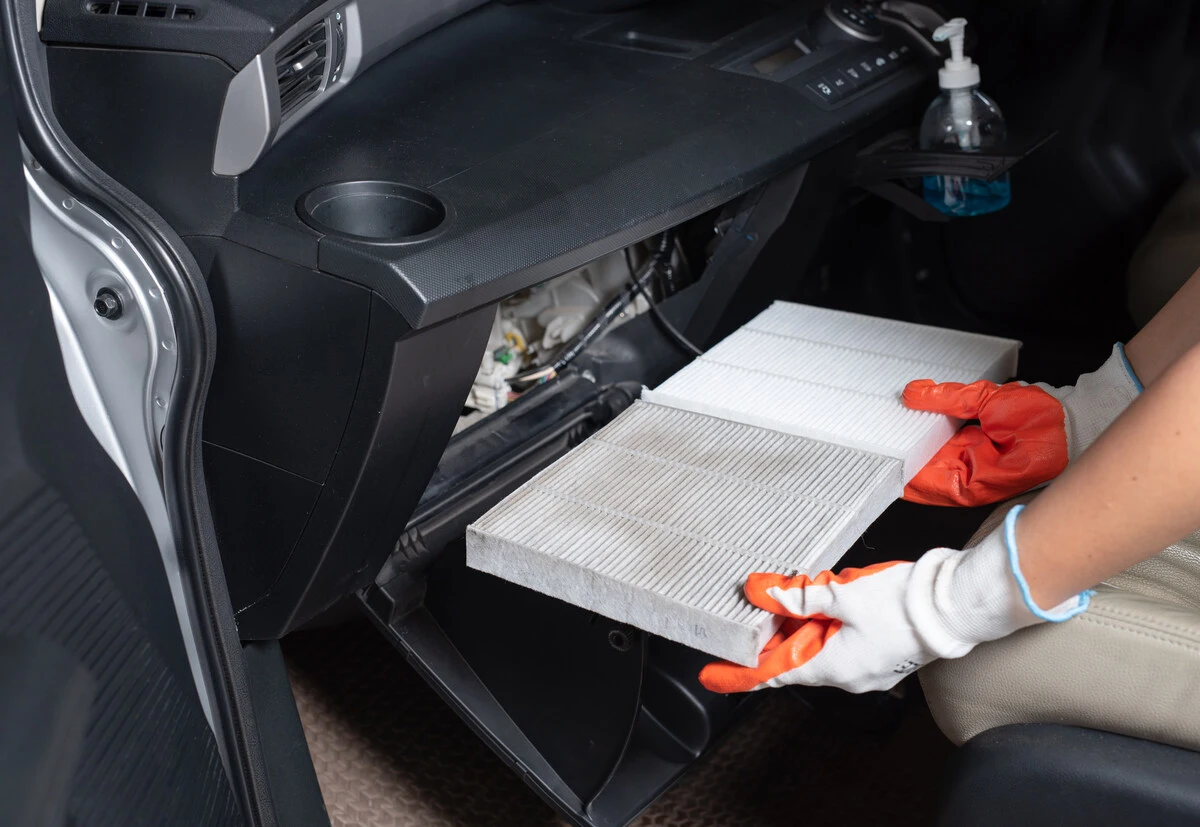Understanding Cabin Air Filters
What Are Cabin Air Filters and Their Function?
Cabin air filters are a crucial part of your vehicle’s heating, ventilation, and air conditioning (HVAC) system. These filters work tirelessly to keep the air inside your car clean and free from contaminants like dust, pollen, and other airborne particles. By doing so, they significantly improve the air quality within the cabin, making your drive more comfortable and healthier, especially for those with allergies or respiratory issues. Additionally, cabin air filters help to eliminate unpleasant odors and prevent the growth of mold and bacteria in the HVAC system, ensuring that the air you breathe is as fresh as possible.
Is It Easy To Replace Your Own Cabin Air Filter?
Absolutely! Replacing a cabin filter, which plays a crucial role in purifying the air within your vehicle by blocking contaminants like dust, odors, and pollen, is a fairly straightforward task that most people can accomplish with a little guidance and a few basic tools. The exact process can vary slightly depending on the make and model of your vehicle. Let’s walk through a step-by-step guide to make it even simpler.
Step-by-Step Guide to Replacing a Cabin Air Filter
- Locate the filter: The car’s cabin filter is usually found behind the glove box. Some cars might have it under the hood or beneath the dashboard. Your vehicle’s owner’s manual will provide specific instructions for your model.
- Remove the glove box: In most vehicles, you’ll need to remove the glove box to access the filter. This is generally done by releasing a few clips or screws. Be gentle to avoid breaking any parts.
- Remove the old filter: Once you’ve accessed the compartment, you can simply slide out the old filter. Make sure to take note of the orientation of the filter so you can install the new one correctly.
- Install the new filter: Slide the new filter into the compartment, ensuring it’s placed in the same direction as the old one.
- Reassemble the glove box: Put everything back in place and make sure it’s securely fastened.
Required Tools and Materials
For most vehicles, you’ll need a few basic tools and materials to replace the cabin air filter:
- New cabin air filter
- Screwdriver (usually Phillips’s head)
- Owner’s manual
- Gloves (optional)
Most cabin air filters are affordable and simple to replace, making them accessible even for inexperienced drivers.

Estimated Time and Difficulty Level
The entire process should take about 15 to 30 minutes and is generally considered an easy task, even for those new to car maintenance. The most important thing is to follow your owner’s manual and take your time. Once you’ve done it a couple of times, it becomes second nature!
So, don’t be intimidated. Replacing your own cabin air filter can save you time and money while also giving you the satisfaction of a job well done.
Will AutoZone Replace The Cabin Air Filter?
Replacing your cabin air filter may seem like a daunting task if you’re not particularly handy with cars. But what if you could have a professional do it for you instead? That’s where AutoZone’s services come into play.
AutoZone’s Services for Cabin Air Filter Replacement
AutoZone offers more than just parts and accessories for your vehicle; they also provide helpful services that can save you time and effort. While AutoZone primarily focuses on retail and does not offer full-service maintenance, they can assist you in selecting the correct cabin air filter for your vehicle and often provide instructions on how to replace it yourself.
Comparing DIY and Professional Services
There are definite advantages to having a professional handle your cabin air filter replacement. If you go to a service shop, you can count on trained technicians who can get the job done quickly and efficiently. This can be a great option if you don’t feel comfortable doing it yourself or lack the necessary tools and experience.
However, opting for a DIY approach with guidance from AutoZone can also be rewarding. You get to save on labor costs and gain a bit of automotive know-how in the process. Plus, AutoZone often stocks a variety of quality filters, so you can choose the best one for your budget and needs. Replacing your car’s air filter yourself is straightforward and can significantly improve your vehicle’s performance and engine health.
Cost Analysis of Professional Replacement vs DIY
Let’s talk numbers. Having a filter professionally replaced can cost you anywhere from $50 to $100, depending on the make and model of your vehicle and local labor rates. On the other hand, buying a filter from AutoZone may set you back between $10 and $30, and if you decide to change it yourself, that’s all you’ll pay.
In summary, while AutoZone may not replace the filter for you, they make it incredibly easy to do it yourself by offering the right parts and guidance. Whether you opt for a professional replacement or go the DIY route, making sure your filter is clean and functional is key to maintaining your vehicle’s air quality and HVAC system.
What Happens When You Don’t Change Your Cabin Air Filter?
Ever wondered what might happen if you never change your cabin air filter? Ignoring this small but crucial component can have significant impacts on both your vehicle and your health.

Impact on air quality
A dirty or clogged cabin air filter, or any dirty air filter, can’t effectively filter out dust, pollen, and other allergens, leading to poor air quality inside your car. This can be particularly bothersome for passengers who suffer from respiratory issues or allergies. Imagine driving with a constant stream of unfiltered air—it’s neither pleasant nor healthy.
Effects on the HVAC system
The HVAC system in your car works hard to keep you comfortable, but a clogged cabin air filter can put extra strain on it. This extra load can lead to reduced air flow and inefficient heating or cooling. In the long run, the entire system can become overworked, potentially leading to costly repairs. Simply put, failing to change your cabin air filter can wreak havoc on your car’s HVAC system.
Common signs of a clogged filter
How do you know if it’s time to replace your cabin air filter? There are a few telltale signs. If you notice a musty odor when you turn on the air conditioning or heating, that’s a classic indicator of a dirty filter. Reduced airflow from the vents or persistent foggy windows are other common symptoms. Listening to these warning signs can save you from bigger headaches down the road.
Cost and Availability of Replacement Cabin Air Filters
Where to Find Replacement Filters and Price Range
Finding a replacement cabin air filter is easier than you might think. You can purchase them at auto parts stores, online retailers, and even car dealerships. The cost of a replacement cabin air filter can vary widely depending on the type and brand, as well as your vehicle’s make and model. Does it matter what brand of air filter I use? On average, you can expect to pay anywhere from $10 to $50. Some popular brands to consider include Denso, K&N, and Toyota OEM. Online retailers like Rockauto and CarParts.com often offer discounts, especially if you buy in bulk, making it a cost-effective option for savvy shoppers.
Tips for Choosing the Right Replacement Cabin Air Filter
Factors to Consider When Selecting a Filter
Choosing the right replacement cabin air filter is essential for maintaining your vehicle’s air quality and HVAC system performance. Here are some key factors to consider:
- Compatibility: Ensure the filter is compatible with your vehicle’s make and model. Check your owner’s manual or consult with a professional if you’re unsure.
- Type of Filter: Decide whether you need a standard filter or a HEPA filter. HEPA filters offer higher filtration efficiency, which can be beneficial for those with allergies.
- Filtration Efficiency: Look for filters with a high MERV rating (Minimum Efficiency Reporting Value) of 11 or higher. This rating indicates the filter’s ability to capture smaller particles.
- Odor-Neutralizing Capabilities: If you have pets or suffer from allergies, consider filters that offer odor-neutralizing features.
- Cost and Availability: Compare prices and availability. Look for discounts or promotions that can make your purchase more economical.
- Warranty and Durability: Check the filter’s warranty and expected lifespan to ensure it will last a reasonable amount of time.
By keeping these factors in mind, you can select a replacement cabin air filter that meets your needs and ensures optimal performance for your vehicle.
Can I Change My Car Air Filter Myself?
The simple answer is yes; you can absolutely change your vehicle’s air filter yourself. Whether you’re talking about the engine air filter or the cabin air filter, most replacements can be done with just a few basic tools and a little bit of patience. It’s a straightforward process that can save you money and time compared to going to a professional mechanic.

Differences Between Engine Air Filter and Cabin Air Filter
Before diving into the DIY air filter replacement process, it’s essential to know the differences between the engine air filter and the cabin air filter. Engine air filters keep dust, dirt, and other debris from entering the engine, ensuring it runs smoothly and efficiently. A dirty engine air filter can lead to restrictions that affect engine performance, so it’s important to maintain and replace it regularly. On the other hand, the cabin air filter improves the air quality inside your vehicle by filtering out pollen, dust, and other airborne particles. Both are crucial for the performance and comfort of your car but serve different purposes.
Benefits of Changing Your Own Air Filters
One of the significant benefits of changing your own air filters is cost savings. Professional services can charge a premium for what is often a simple task. By doing it yourself, you only pay for the filter itself, which is usually quite affordable. Additionally, the sense of accomplishment from doing your own DIY air filter replacement can be highly satisfying. It also allows you to get familiar with your vehicle’s inner workings, which could come in handy for future DIY maintenance projects.
Safety Tips for DIY Air Filter Replacement
While replacing your car’s air filter is generally safe and straightforward, there are a few safety tips to keep in mind. First, always ensure your car is turned off and parked on a flat surface. Use the right tools and follow the instructions specific to your vehicle model, as outlined in your owner’s manual. It’s also a good idea to wear gloves to keep your hands clean and avoid any potential injuries.
Ready to take the plunge into DIY air filter replacement? There’s no better time to start than now. Keeping your vehicle’s air filters in top condition ensures a smoother ride and a cleaner cabin environment. Feel empowered to handle this essential maintenance task on your own and enjoy the benefits of better performance and air quality!
Your journey to a well-maintained car starts here! Explore our extensive selection of air filters designed to fit your specific vehicle. Enhance your driving experience with clean air and reliable performance today.

